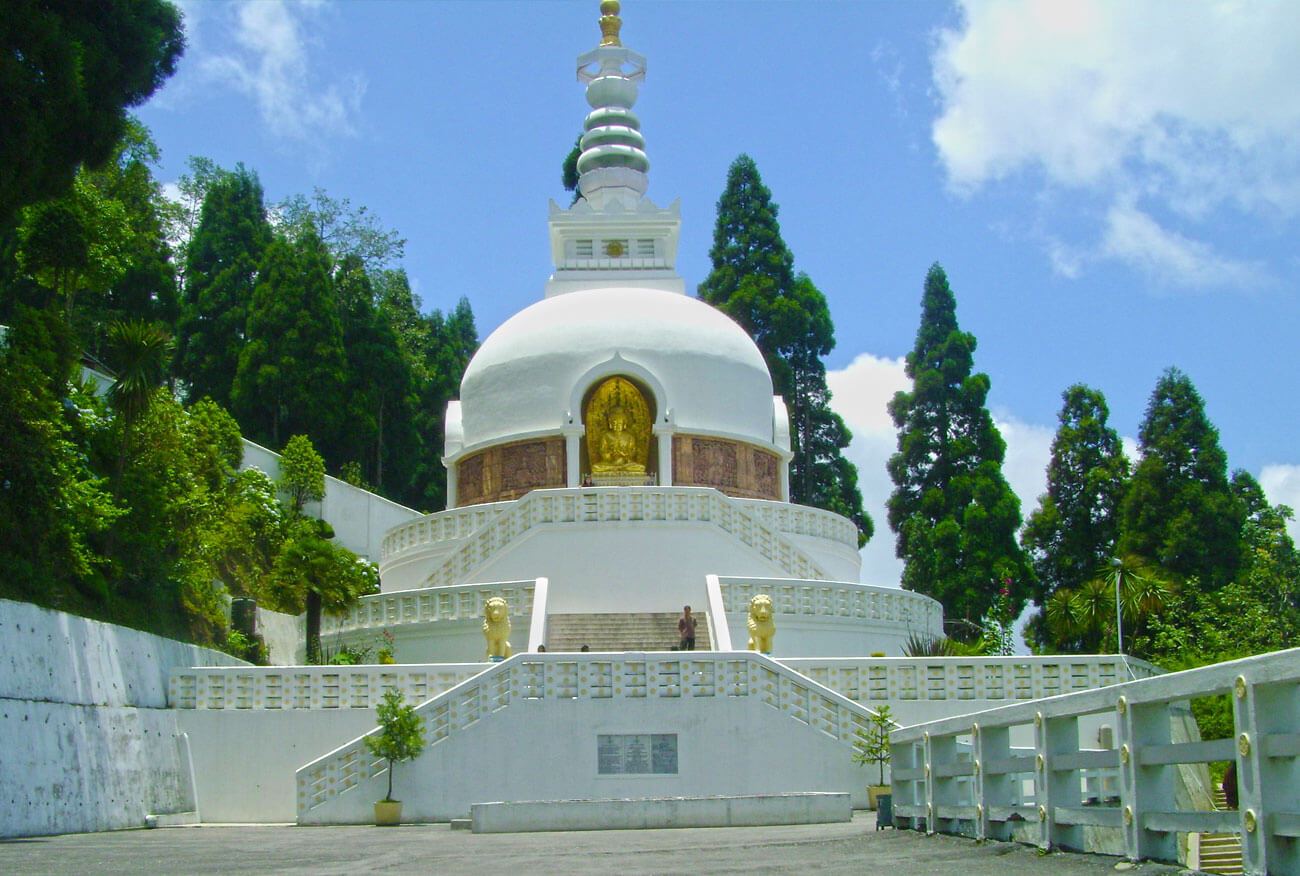Nestled in the serene hills of Darjeeling, the Peace Pagoda stands tall as a symbol of harmony, unity, and non-violence. The Pagoda is a majestic monument that reflects the Buddhist philosophy of peace and compassion. Built by the Japanese Buddhist monk, Nichidatsu Fujii, in the 1970s, the Peace Pagoda, Darjeeling is one of the 80 such structures in the world.
The Pagoda is a popular tourist attraction and a spiritual site for people from all over the world. The breathtaking view of the Himalayan range, coupled with the tranquil atmosphere, makes it a perfect spot for meditation and introspection. In this article, we will explore the history, architecture, and significance of the Peace Pagoda, Darjeeling.
The History of Peace Pagoda, Darjeeling
The Peace Pagoda, Darjeeling was built by Nichidatsu Fujii, a Buddhist monk from Japan, who founded the Nipponzan-Myōhōji Buddhist Order. The Pagoda was constructed in 1972 with the intention of spreading the message of peace and non-violence to the world. The construction of the Pagoda was carried out by a group of monks from Japan who worked tirelessly for over five years to complete the structure.
The Architecture of Peace Pagoda, Darjeeling
The Peace Pagoda, Darjeeling is a beautiful example of Japanese architecture. The Pagoda is made of pure white marble, and its design is based on the four avatars of Lord Buddha. The four avatars represent the different stages of the life of Lord Buddha. The Pagoda has four gilt bronze statues of Lord Buddha, each facing the four cardinal directions. The Pagoda also has a beautiful garden that surrounds it, which is filled with colorful flowers and plants.
Show More
The Significance of Peace Pagoda, Darjeeling
The Peace Pagoda, Darjeeling is a symbol of peace, unity, and compassion. It is a monument that promotes peace and non-violence in the world. The Pagoda has become a popular destination for people who seek peace and tranquility. It is a place where people can come and meditate, and find inner peace. The Pagoda has also become a popular spot for tourists, who come to admire its beauty and learn about its history.
The Message of the Peace Pagoda, Darjeeling
The message of the Peace Pagoda, Darjeeling is to promote peace and non-violence in the world. It is a message that is relevant today more than ever. The Pagoda is a reminder that we should all strive to live in harmony and peace with each other. The Pagoda teaches us that we should look beyond our differences and embrace each other as fellow human beings.
The Spiritual Significance of Peace Pagoda, Darjeeling
The Peace Pagoda, Darjeeling is also significant from a spiritual point of view. It is a place where people can come and meditate, and find inner peace. The Pagoda is surrounded by beautiful gardens that are filled with colorful flowers and plants. The Pagoda is a serene and peaceful place that helps people to connect with their inner selves.
How to Reach Peace Pagoda, Darjeeling
The Peace Pagoda, Darjeeling is located on the Jalapahar hills in West Bengal, India. The Pagoda is easily accessible by road and can be reached by car or taxi. The nearest airport is Bagdogra, which is located about 65 km from Darjeeling. The nearest railway station is New Jalpaiguri, which is located about 70 km from Darjeeling.
- Witness the stunning sunrise over the Himalayan range from Tiger Hill
- Visit the Ghoom Monastery, which is one of the oldest Buddhist monasteries in Darjeeling
- Explore the picturesque tea gardens of Darjeeling and learn about the tea-making process
- Go for a ride on the Darjeeling Himalayan Railway, which is a UNESCO World Heritage site
